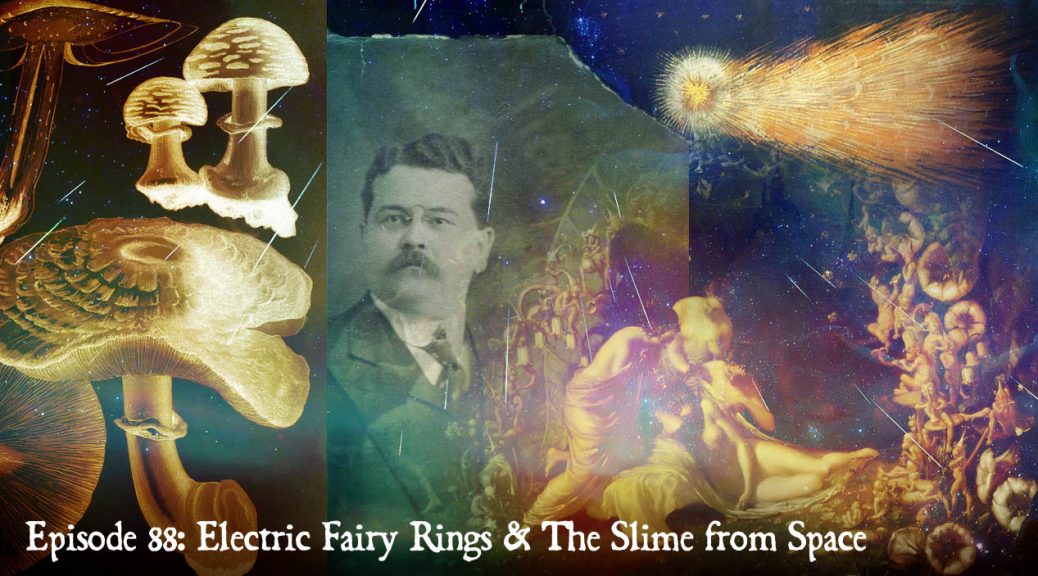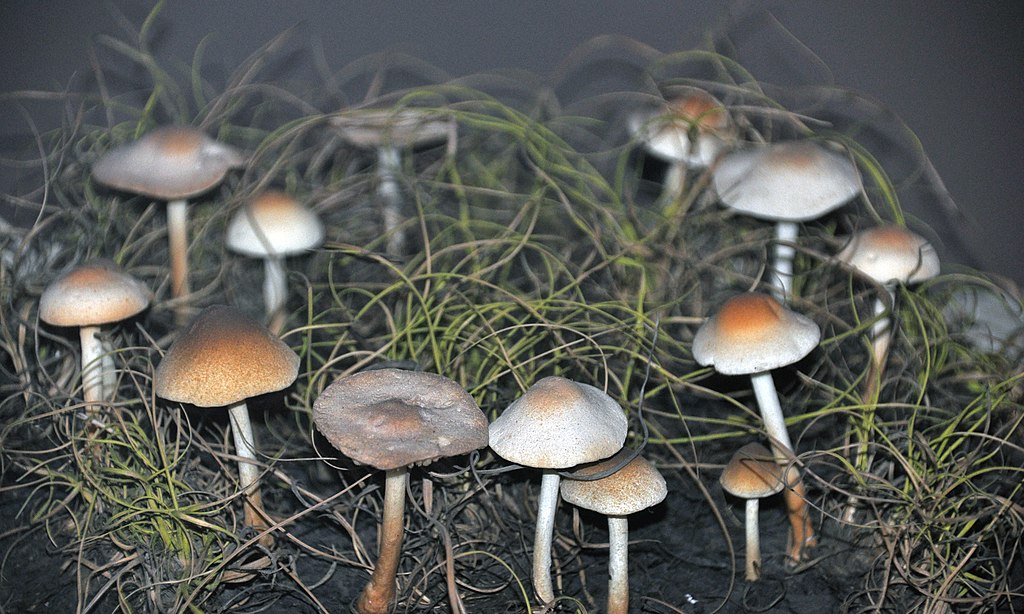
Electric Fairy Rings and the Slime from Space
Podcast: Play in new window | Download (Duration: 50:04 — 57.3MB)
Subscribe: Apple Podcasts | Spotify | Android | Podchaser | RSS | More
The folklore of fairy rings and “star jelly” is strangely connected to celestial phenomena, including lightning and shooting stars.
We begin with a description of a folkloric fairy ring and its dancing population from John Aubrey’s 1690 book Natural History of Wiltshire, following this with a few other folkloric takes on the topic.
The botanical phenomena of fairy rings is then described that is, circular configurations of mushrooms sprouting overnight or ringlike markings of grass in fields.

The pseudo-scientific 19th-century notion that these rings were caused by lightning strikes as espoused by Sir Walter Scott and Erasmus Darwin is then discussed with a modern parallel connecting this with flying saucer lore provided by Jacques Vallée’s 1969 book Passport to Magonia.
A more ancient connection between lightning and the fruition of mushrooms is then discussed with examples of this belief provided by the Roman naturalist Pliny the Elder and poet Juvenal.
A connection between lightning and the production of a strange slime occurs in a contemporary pamphlet recounting the terrors of 1638’s Great Thunderstorm of Dartmoor England. Mrs. Karswell reads for us this lurid account believed to be the first description of ball lightning.
Rather than ball lightning, however, most accounts of heaven-sent “fireballs” from the early modern and modern era are believed to describe meteors, understood at the time as “falling” or “shooting stars.”
Folklore connects falling stars with the deposit upon the earth of a sort of slime or gelatinous substance known most commonly as “star jelly,” but a dozen or so other names from European folklore are also provided, with the sinister-sounding Welsh term “pwdre ser,” meaning, “rot from the stars” also being fairly common in more modern literature.
Some literary references to this belief are also provided, most of which contrast the beauty or hopeful wishes associated with a falling star and the loathsome heap of jelly it becomes on landing.
A few more modern theories attempting to provide a more scientific account are then provided. Most commonly these include star jelly as frogspawn, jelly fungi, or nostoc, a a single-celled organism that forms into filaments and these into colonies that look like gelatinous piles of dark green (and putrefying) grapes.
The traditional application of nostoc as a food source and medicine are also discussed, as the source of its name in the writings of the 16th-century Swiss natural philosopher and physician Paracelscus who regarded it as something blown “blown from the nostrils of some rheumatick planet.”
Thanks to its seemingly supernatural appearance with the nocturnal dew, the alchemists assigned an elevated role to nostoc, calling it “the water of the equinoxes.” Some illustrations of alchemists attempting to collect nostoc and touting its qualities are provided from the enigmatic Mutus Liber or “Mute Book” of 17th century France, as well as in the work of the modern alchemist Fulcanelli from his 1926 book The Mystery of the Cathedrals. The mystery of the identity of this writer calling himself “Fulcanelli” as well as the claims of his student Eugène Canseliet, who supposedly transmuted lead into gold in 1922 are touched upon.

We then have a look at nostoc through the writings of Charles Fort, whose 1919 volume, The Book of the Damned, provided inspiration for all future writings on scientific anomalies, the paranormal, and (to some extent science fiction.) Fort’s arguments about the identification of nostoc with star jelly are illustrated in his discussion of “the Amherst object,” a particularly weird lump of something-or-other said to have fallen in a field near Amherst, Massachusetts in 1819. We also hear a sampling of his eccentric prose echoing his facetiously posited theory of the “Super Sargasso Sea,” an inter-dimensional repository responsible for occasionally teleporting things (or people) in and out of our world.
A few more choice cases of meteors associated with mysterious gelatinous substances are discussed.
We conclude with a look at the inspiration for the 1958 film The Blob, in which a meteor crashes to earth releasing the titular menace upon a small Pennsylvania town. One possible inspiration is Joseph Payne Brennan’s novella, “Slime” published in Weird Tales in 1953, five years before the film’s release. However there are substantial differences between the storylines, which are discussed.
More interesting (in light of our topic) is the notion that the film was inspired by true events, namely an incident documented in newspaper reports of September 26, 1950, describing something bizarre encountered by Philadelphia police during their patrol. It doesn’t seem likely this story played a big role in inspiring the film, and while the newspaper account attempts to categorize the phenomenon as a particularly weird sort of “flying saucer” (saucers being particularly trendy at the time), eyewitnesses describe the object as something more akin to the fairy world. Mrs. Karswell reads the entire newspaper account.






